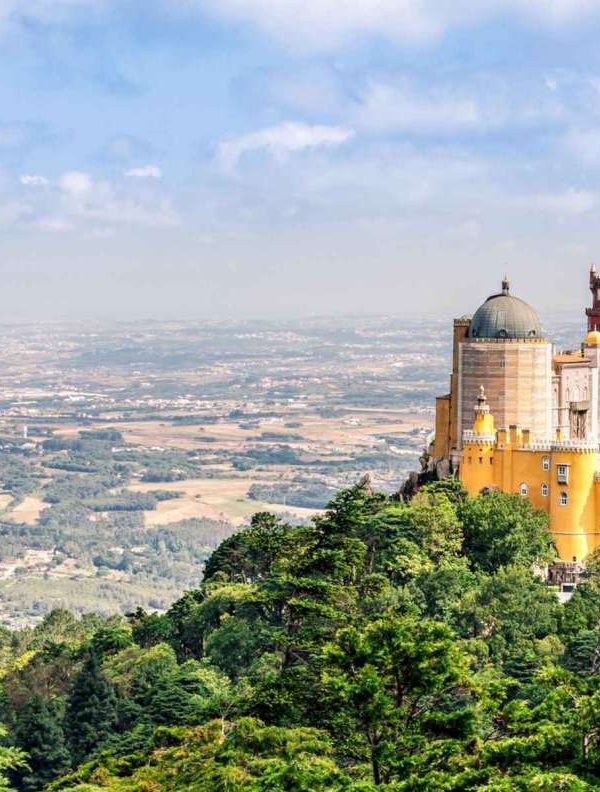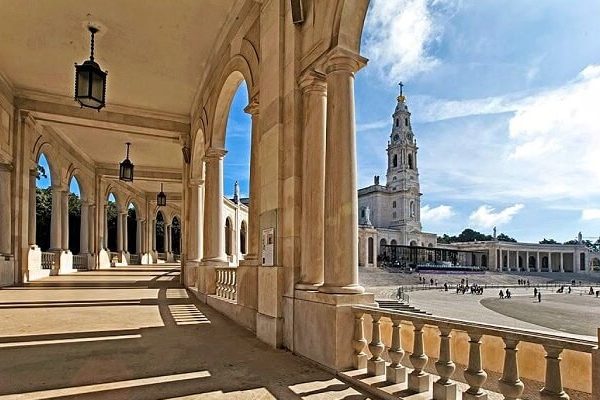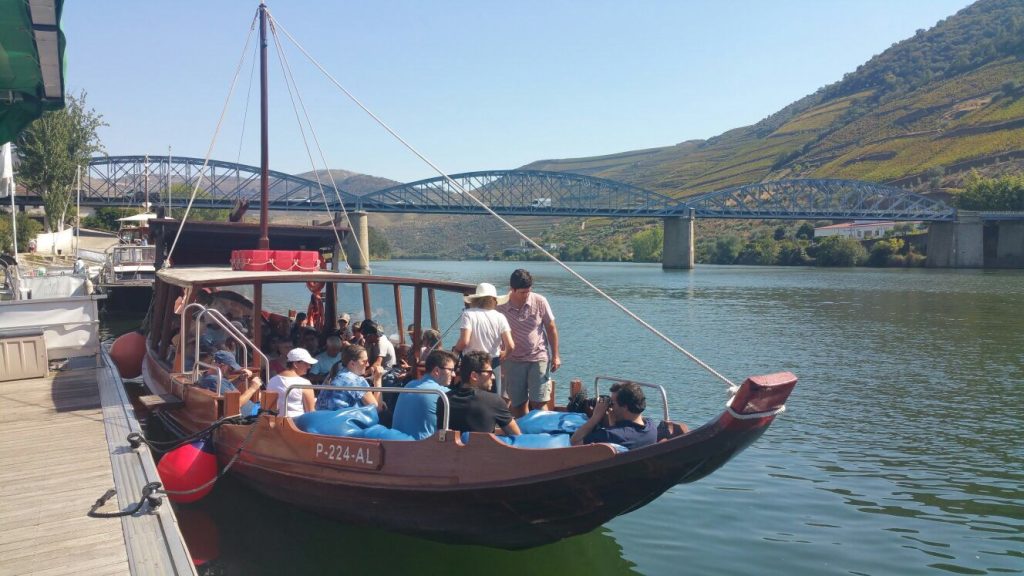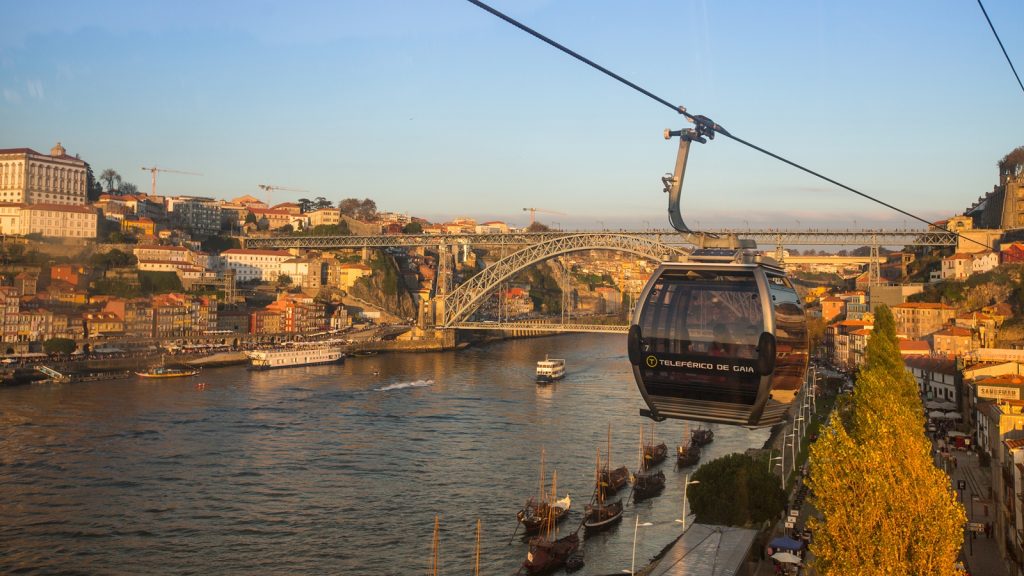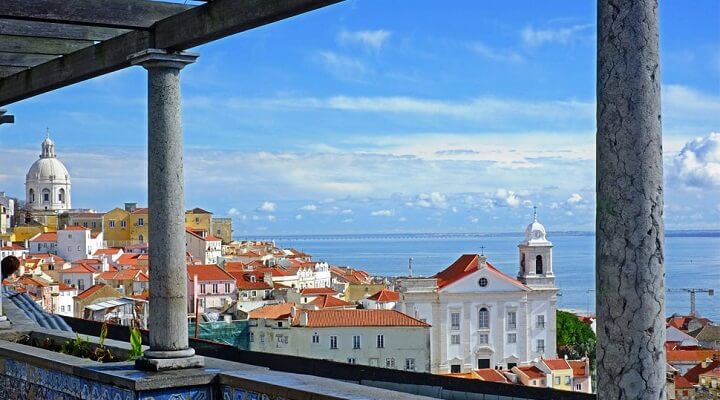Some curiosities about Portugal that we hope you discover in our 9 Days Tour in Portugal.. In Tomar, visiting the Convent of Christ is a must, featuring the castle and the Charola of the Templars, as well as the Church of D. Manuel I and the Renaissance cloister that Diogo de Torralva overlaid onto the cloister just completed by the extraordinary João de Castilho in such a short time.
Here, you can also find exemplarily the so-called Estilo Chão, an architectural development unique to Portugal, characterized by rich interiors at the expense of exterior opulence. Through the Convent of Christ, we can learn about the history of Portugal, from its foundation and the importance of the Templars in the “creation” of the country to the present day.
Undoubtedly, the Atlantic waters get colder as we move north, yet the beaches remain beautiful, from the Foz do Douro to Minho and Viana do Castelo, where Monte de Santa Luzia impresses all who pass by.
The journey will start and end in Lisbon. For any questions, feel free to contact us.
🗓️ Pricing:
| Number of People | Price | Price Person |
|---|---|---|
| 1 Person | 2960€ | – |
| 2 People | 3150€ | 1575€ Per Person |
| 3 People | 3250€ | 1083€ Per Person |
| 4 People | 3400€ | 850€ Per Person |
| 5 People | 3520€ | 704€ Per Person |
| 6 People | 3650€ | 608€ Per Person |
| 7 People | 3900€ | 557€ Per Person |
| 8 People | 4150€ | 518€ Per Person |
Portugal is known for its rich cultural heritage, thanks to a mix of various influences from civilizations that inhabited the territory, including Celts, Phoenicians, Romans, and even Moors, and, of course, during the Age of Maritime Expansion that led the old world to new ones.
As a result, Portugal has become a more eclectic country, with new influences reflected in various areas, such as gastronomy. Come discover Portugal with us on our 9 Days Tour in Portugal.
Itinerary
We’ll begin by exploring Lisbon, starting in the Baixa, which was rebuilt after the earthquake of 1755. Here, Pombaline architecture transformed the city with wide streets and resilient buildings. We’ll ascend to Alfama, passing by the Lisbon Cathedral (Sé de Lisboa) and the Church of Santo António, with time to wander through its charming alleys. We’ll continue along Avenida da Liberdade to Marquês de Pombal Square and Eduardo VII Park, where we’ll discuss the historical relationship between Portugal and England. After lunch, we’ll visit Belém, home to its iconic monuments: the Belém Tower, Jerónimos Monastery, and the Discoveries Monument. We’ll conclude with a visit to the Pastéis de Belém Factory. Finally, we’ll explore Parque das Nações, a symbol of modern Lisbon and Expo ’98, showcasing bold architecture and functional areas representing the city’s progress.
On the second day, we’ll visit Sintra, starting with an optional visit to Queluz Palace, famous for its Rococo style and stunning gardens. It was in this palace that Dom Pedro IV of Portugal, who was also Dom Pedro I of Brazil, was born and died. Next, we’ll explore the center of Sintra, with its artisan shops and the famous Piriquita pastry shop, where you can try the traditional Travesseiros de Sintra. Sintra is rich in historical monuments, and you’ll be able to choose to visit up to two, such as Pena Palace, Quinta da Regaleira, or the Castle of the Moors, with the help of your guide. We’ll then head to Cabo da Roca, the westernmost point of Europe, and afterward to Cascais, where you’ll have time to explore the village and its beautiful bay before passing through Estoril and the famous Casino.
On this day, we’ll explore the Alentejo region, starting with a visit to a traditional cork factory, where we’ll learn about the process from extraction to the final product. The cork oak tree, which produces cork, regenerates after harvesting, and Portugal is responsible for 55% of the world’s cork production, valued for both flooring and wine corks. Next, we’ll explore Évora, a medieval city rich in history, visiting the eerie Chapel of Bones and the Temple of Diana, in addition to appreciating the Aqueduct of Silver Water. The city combines Roman and Arab influences and has served as a residence for Portuguese kings. To finish.
Optional: Visit an Alentejo winery, where we’ll learn about the production process and taste wines from the region, renowned for their light whites and full-bodied reds, ideal due to the hot, sunny climate of Alentejo.
On the fourth day of our itinerary, we’ll leave Lisbon for Tomar, the city of the Templars. We’ll visit the medieval part of the city, highlighting the Republic Square and the Main Church, with a stop at a famous local café, where you can try the traditional Fatias de Tomar. Next, we’ll explore the 12th-century Church of Santa Maria do Olival, the headquarters of the Order of the Templars in Portugal, where Gualdim Pais, the city’s founder, is buried. The visit continues at the Convent of Christ, starting with the Templar castle and the iconic Charola. From Tomar, we’ll proceed to Fátima, where we’ll visit the Sanctuary of Our Lady of Fátima, including the Chapel of the Apparitions and the two Basilicas: of Our Lady of the Rosary and the Most Holy Trinity. Our final stop will be Coimbra, where we’ll explore the University of Coimbra, focusing on Joanina Library, the Chapel of St. Michael, and the Sala dos Capelos. Don’t forget to book tickets for the library visit in advance.
We’ll start by concluding our visit to Coimbra, exploring the Baixa, the historic center with its narrow and charming streets filled with cafés, pastry shops, and restaurants. The separation between “Alta,” where the nobility and students lived, and “Baixa,” dominated by commerce and craftsmanship, is one of the city’s trademarks. Next, we’ll head to Aveiro, the “Portuguese Venice,” known for its canals and Art Nouveau buildings. Here, we can savor the traditional ovos-moles and take a ride on a moliceiro boat through the canals. The visit will also include a stop at the salt pans, where the salt industry remains important. To finish, we’ll visit Costa Nova and its famous palheiros, striped beach houses that were once used as fishing storages and now serve as typical residences of the region.
Let’s discover why Porto is one of the most beautiful cities in Europe. We’ll start at Casa da Música in Matosinhos and continue to Foz, the city’s elegant areas. In the downtown area, we’ll explore Avenida dos Aliados, with the city hall and the statue of Dom Pedro I, and São Bento Station, with its beautiful historical tiles. We’ll visit the bustling Rua de Santa Catarina and the iconic Majestic Café, followed by the famous Lello Bookstore, which inspired scenes from Harry Potter. We’ll cross the D. Luís Bridge to Gaia to visit a Port wine cellar and conclude at the Serra do Pilar Monastery with stunning views of the city.
On this day, we will discover the ways of Santiago, with a brief stop in Vigo for a visit. The Pescadaria street may be one suggestion, as it is one of the main tourist attractions in Vigo, where the oyster women open the legendary oysters from the Vigo estuary and prepare various dishes. Traditionally, the shellfish are bought directly from the oyster women and enjoyed fresh, with a squeeze of lemon and a glass of Alvarinho wine. Next, we’ll continue to Santiago de Compostela, with its serenity and history, home to its university and properly dressed students, and its medieval streets filled with music, art, and pilgrims from around the world sharing their experiences. The visit to the cathedral is unique; according to tradition, the tomb of Saint James the Greater, the patron saint and protector of Spain, is found here. For this reason, it became the primary destination for Christian pilgrimage in Europe after Rome during the Middle Ages.
The Douro Valley is one of the most beautiful places in Portugal, ideal for wine lovers and stunning landscapes. We’ll start our visit in Amarante, where we can see the church and convent of São Gonçalo, along with the 18th-century bridge over the Tâmega River. Next, we’ll head to Vila Real, where we’ll visit Mateus Palace, an impressive example of Portuguese Baroque, also known for the famous Mateus Rosé wine. In Alto Douro, we’ll enjoy the view from the Miradouro de Casal de Loivos and visit the Pinhão station, adorned with tiles depicting the wine production. To conclude, we’ll visit a Quinta in the Douro Valley, where we’ll learn about the entire wine production process and, of course, enjoy a tasting.
We’ll leave Porto and return to Lisbon with delightful stops along the way. In Nazaré, we’ll see the famous giant waves and learn about the tradition of the “seven skirts” women. We’ll continue to Alcobaça, where we’ll visit Alcobaça Monastery, with its impressive central nave and the tombs of Pedro and Inês. Finally, we’ll arrive in Óbidos, a medieval village with narrow, whitewashed streets, surrounded by walls and gifted by D. Dinis to Queen D. Isabel, becoming part of the House of Queens.




